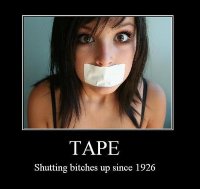Women hold up half the sky. — Chinese Proverb.
Don’t you just love it when you read a book that changes the way you view the world? Last year for my 40th birthday Melinda Tankard Reist bought me a copy of the Pulitzer-prize-winning Half The Sky. This brilliant work has been described by the publishers as a “call to arms against our era’s most pervasive human rights violation: the oppression of women and girls in the developing world”. I became so passionate about bringing an awareness to the plight of girls in the developing world and to how simple some of the solutions are that I immediately incorporated some of the messages into our Enlighten Education workshop on feminism as it applies to this generation of girls: Real Girl Power (for more on this workshop, you may be interested in this news article: Putting Girls Issues Back on the Radar).
One of the key resources that informed this workshop was Plan International’s brilliant “Because I am a Girl” campaign. Yesterday I was fortunate enough to have been invited by the forward-thinking team at Mercer (a global leader in financial services) to attend the launch of Plan’s new paper: “Because I am a Girl, The State of The World’s Girls 2010. Digital and Urban Frontiers: Girls in a Changing Landscape”. Plan is producing one girl report each year in the run-up to 2015, the target year for the Millennium Development Goals. Each report provides tangible proof of the inequalities that still exist between boys and girls. Mercer is supporting Plan in its life-saving work and has also been using me to present to executives who are involved in their truly vibrant Women in Leadership Network. Isn’t it exciting to see corporations involved in partnerships that make a real difference to the lives of not only their staff but to those who have fewer opportunities?
The launch started with a reminder about why unleashing women’s potential is not only the right thing to do, it is also the smart thing to do in order to combat poverty:
This year’s report was particularly of interest to me as it examined the impact of both urbanisation and technology on young women — issues we are also struggling with at a domestic level. A full copy of the Executive Summary may be downloaded here: Because I am a Girl – The State of the World’s Girls 2010.
What are some of the key findings?
Bright lights and big hopes — adolescent girls in the city:
For the first time in history, there are more people living in cities than in rural areas. This has the potential to lead to increased education opportunities and access to better health care services, and it is delaying the age at which girls marry. However, girls in cities are at particular risk of exploitation, poverty, overcrowding and physical and sexual violence.
I was particularly moved by the manifesto street girls and former street girls put together when they met at the 2010 Street Child World Cup in Durban, South Africa:
We, the girls living and [who] have lived on the streets and those of us in shelters from seven countries, the UK, Tanzania, South Africa, the Philippines, Ukraine, Brazil, and Nicaragua, have the following rights and we want them respected:
The Right to live in a shelter and home, The Right to have a family, The Right to be safe, The Right to be protected from sexual abuse, The Right to go to school and get free education, The Right to good health and access to free health services, The Right to be heard, The Right to belong, The Right to be treated with respect and decency, The Right to be treated as equal to boys, The Right to be allowed to grow normally.
Adolescent girls and communication technologies — opportunity or exploitation?
The report identified several reasons why technology is important to girls. These included using technology as a tool to connect, educate, gain employability skills and increase knowledge about health issues such as HIV and AIDS.
Just as we are finding here, however, there is also a dark side: 79% of girls said they did not feel safe online, almost half the girls surveyed said their parents did not know what they accessed online, only a third of girls said they knew how to report danger or something that made them feel bad online, and almost 50% said they would go to meet someone they met online (this is particularly troubling in the developing world, where many young women are tricked into the sex trade by the offer of jobs overseas). Cyber-bullying was also a growing problem.
Moving forward

Two young women who have been assisted by Plan International in Ghana — Gifty and Aisha — were at yesterday’s launch. They both spoke to me about the positive impact intervention has had on their lives. Education works. Investing in girls works.
Plan’s report concludes with a powerful call to action:
We can all contribute. We need to listen to adolescent girls’ views and ensure that their voices are heard by decision-makers. We need to learn from what they have to say. We need to include them in research, in planning and in policies. We need to invest in girls’ skills and ensure that they have access to information, the skills to use it and the power to protect themselves. And finally, we have shown that what many of them have achieved in the face of adversity is truly remarkable. We need to celebrate these achievements and ensure that all girls, wherever they live in the world, have the same chances in life as their brothers.
Girl Effect, an organisation that also does incredible work with young women in the developing world, tells it how it is on their website. The launch page is emblazoned with the following:
The World could do with a good kick in the pants. Agree?
Yep.
So, what am I going to do to make a difference? I am going to continue, and in fact enhance, the workshops we run that inform girls about these important equity issues. I am also going to strengthen the work I do here in Australia with our Indigenous girls — many of these young women are living lives not dissimilar to those girls in the developing world are living, which I find deeply shameful. I am currently coordinating diaries with the amazing Cathy Freeman and hope to work with her on Palm Island with Indigenous girls. Cathy is a true champion of girls and if you are not yet aware of the work her foundation is doing in this area, do investigate.
I would like to also encourage you to act now too. Plan are calling for the United Nations to declare today, September 22nd, to be International Day of the Girl. A simple first step? Sign their petition. And then find out more about the numerous organisations that work to turn oppression into opportunity for women worldwide. Donate. Share this post with colleagues. Educate your girls about the plight of their global sisters. The following video from Girl Effect is also well worth showing and using as a stimulus for discussion – perhaps girls might be asked to produce their own manifesto of rights they think all girls should have respected?
I have found that girls here do care — deeply. In fact, I believe they yearn for something that matters more than just the right jeans, the hottest boyfriend and the latest celebrity that has gone into rehab.
By not discussing the real issues, we do all girls a huge disservice.



